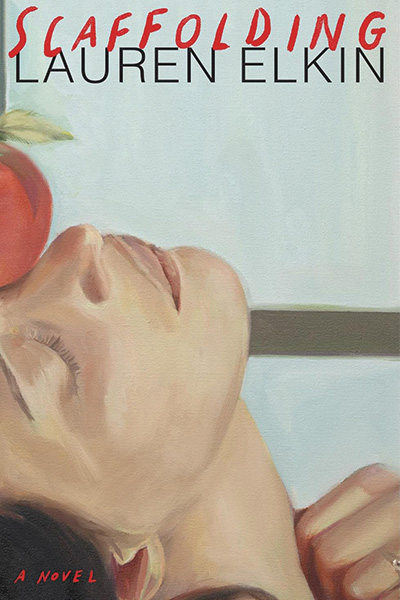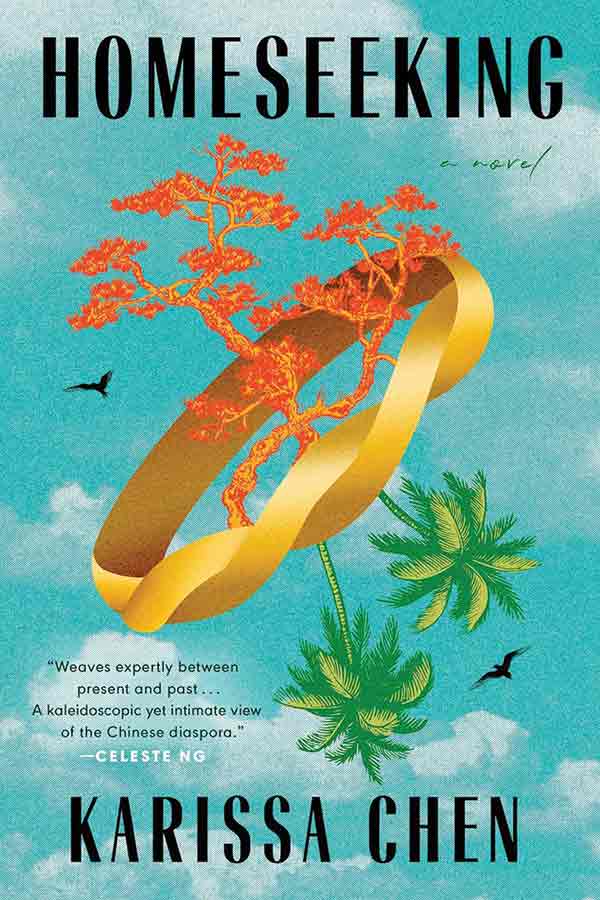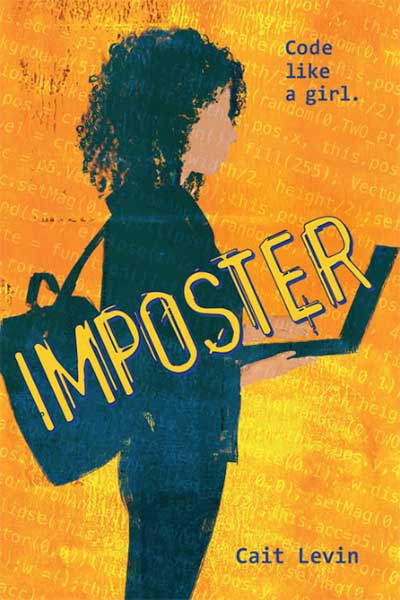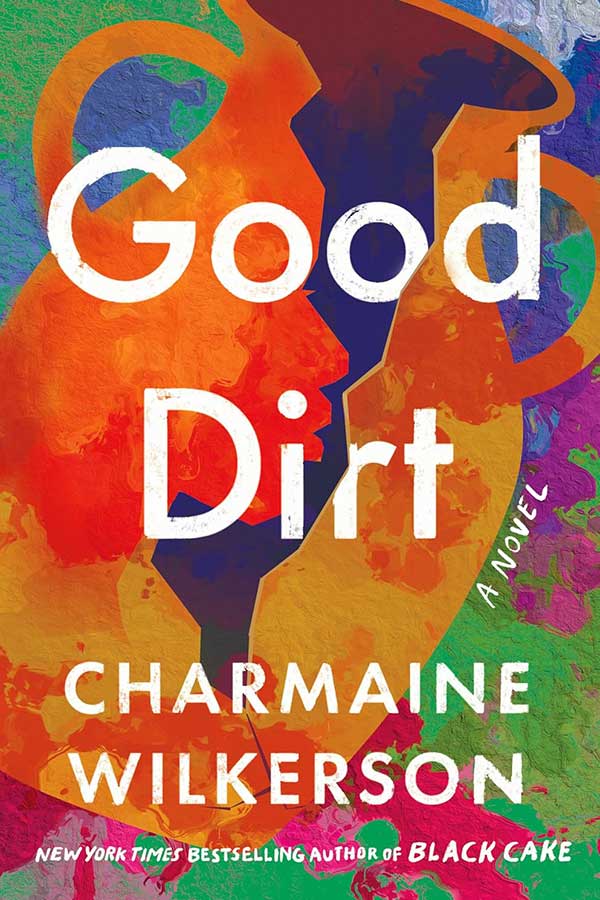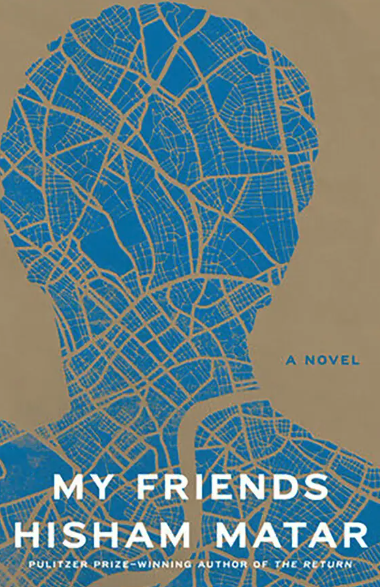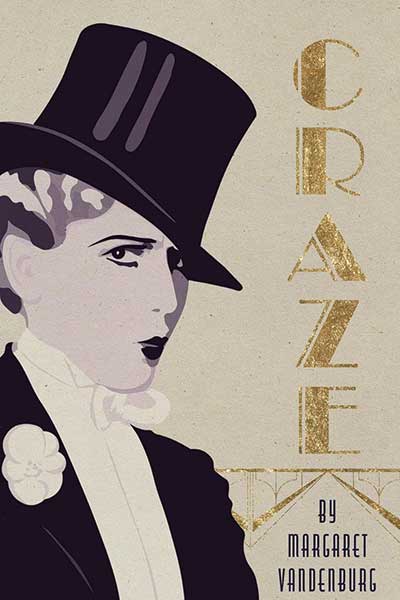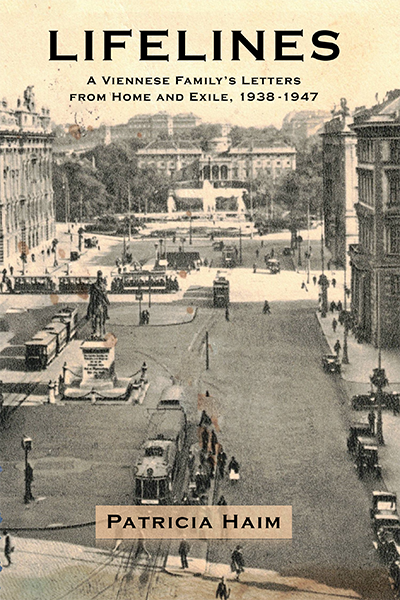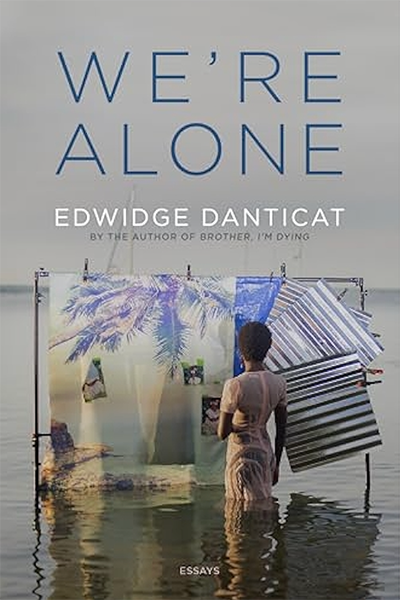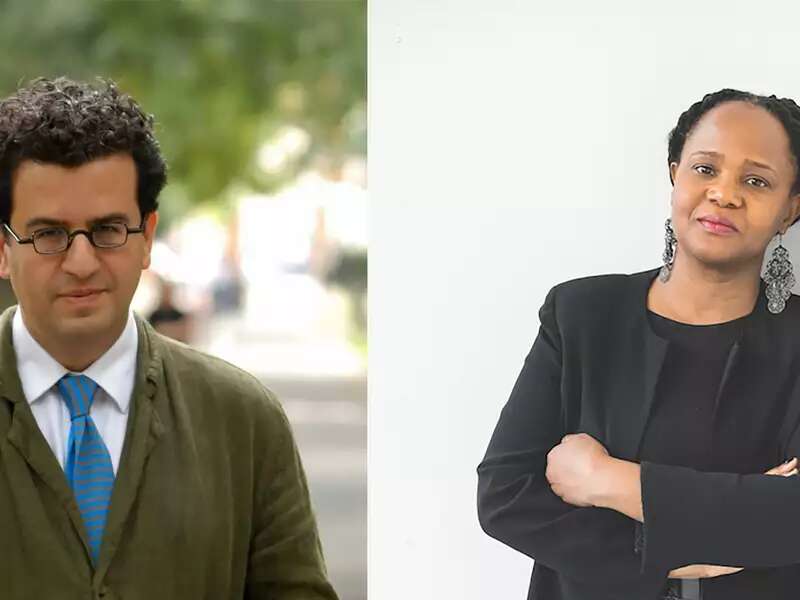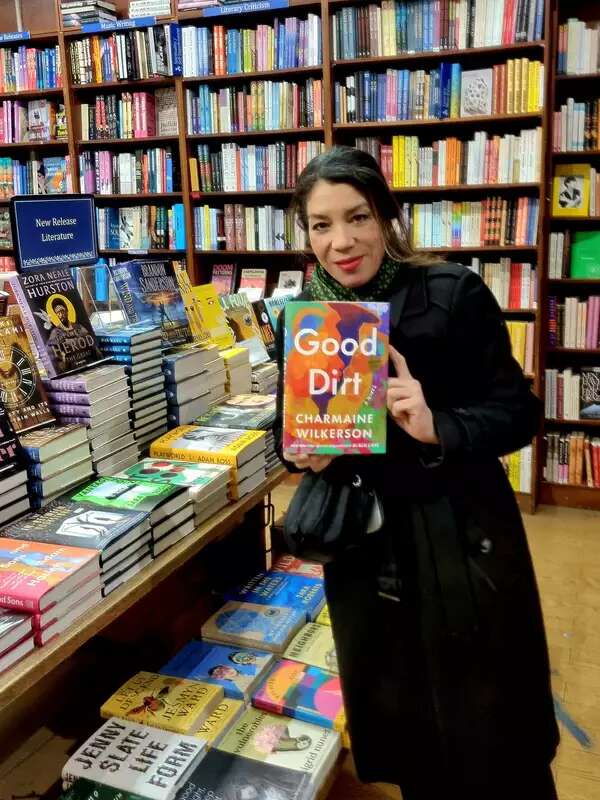Fiction
Scaffolding
by Lauren Elkin ’00
This first novel by Elkin, an essayist, cultural critic, and translator, tells the story of two young couples living in the same Parisian apartment nearly 50 years apart yet experiencing similarly complicated lives. The dreamlike narrative shifts between the characters and across time, as they confront the challenges of marriage, fidelity, pregnancy, loss, and the turbulent times they find themselves in. (Farrar, Straus & Giroux)
Homeseeking
by Karissa Chen ’04
Chen delivers a love story between two childhood friends in a debut novel that spans decades and continents. The story follows Haiwen from 2008 Los Angeles back to his early years in Shanghai, pining for a second chance with his first love, Suchi. Conversely, we follow Suchi from childhood, plowing forward across the next 60 years, through war, hardship, and a diaspora that drives the two apart. Chen’s lovers illustrate how a deep connection and sense of home can exist outside boundaries of time and territory. (Penguin Random House)
Imposter
by Cait Levin ’12
Based on her own experiences observing supportive educators, Levin delivers a coming-of-age story of a girl determined to flourish in exclusionary STEM spaces. Computer science whiz Cam and friend Viv are the only girls on their RoboSub team — a fact that their male classmates do not allow them to forget. Cam facing down naysayers — and her own imposter syndrome — makes for an empowering read and affirms the value of educating through inclusivity. (Penguin Random House)
Good Dirt
by Charmaine Wilkerson ’82
The relationship between place and personhood is central to Wilkerson’s newest work. Good Dirt tells the story of Ebby Freeman, a woman whose life changed at 10 years of age, when tragedy took not only a loved one but also her family’s most precious heirloom, a large clay jar made by an enslaved potter. Read more about the novel in the Spring issue of Barnard Magazine. (Penguin Random House)
My Friends
by Professor Hisham Matar
Winner of the National Book Critics Circle Award for fiction, Professor Matar’s acclaimed book was released last February. The novel, set in London, chronicles the friendship of three Libyan men as they experience life-changing events that test their bonds and identities, forcing them to choose between a life abroad or a return to their homeland. (Penguin Random House)
Craze
by Margaret Vandenburg, senior lecturer in English
At the peak of the Roaring Twenties, the “Queer Craze” allowed New Yorkers like Henrietta “Henri” Adams to live more freely than ever before. Art critic by day and active socialite by night, Henri revels in the city’s vibrant queer nightlife, exploring identity and new relationships. Vandenburg’s prescient historical fiction about a queer person navigating newfound freedoms exposes hard choices and how the very right to make such decisions can become threatened. (Jaded Ibis Press)
More Fiction...
Such Good People by Amy Blumenfeld ’96
Fifteen years after a split-second decision she made as a first-year in college, April — now a thriving professional and a happily married mother of three — is faced with an impossible choice. Will she protect the life she’s built or the friend who sacrificed more than a decade of his own life to make April’s possible? In her second novel, Blumenfeld explores the effects of long-held secrets on friendship, loyalty, and love. (SparkPress)
Don’t You Want Me by Derlys Maria Gutiérrez ’84
After discovering a magical ability to time-travel to the 1980s, Lisa Williams returns to her alma mater, Columbia University. Once again 18 years old — but retaining all her middle-age knowledge — she hopes to encounter the young version of her present-day married lover before he meets the woman who becomes his wife. (Regalo Press)
Starting From Here by Paula Saunders ’82
A Midwestern girl chases her dream of becoming a dancer in this novel about ambition, longing, and identity. (Random House)
Nonfiction
Lifelines: A Viennese Family’s Letters from Home and Exile, 1938–1947
by Patricia Haim ’68
A moving Holocaust-era memoir told through family letters exchanged across continents — between Vienna, New York, England, and Australia — during years of separation and upheaval. (Sunburst Press)
We're Alone
by Professor Edwidge Danticat ’90
A two-time National Book Critics Circle Award winner, Danticat was named a finalist in January for her lauded collection of essays, We’re Alone, released last fall. Formatted with personal narratives and reports, the book explores themes around the environment, colonialism, motherhood, and resilience. Danticat takes readers on a journey from her childhood through the traumas of the COVID-19 pandemic and Haiti’s recent political events, while also paying homage to her literary icons — James Baldwin, Paule Marshall, Gabriel García Márquez, and Toni Morrison, to name a few.
More Nonfiction...
The Journey of a Knightly Family by Elisabeth Tetlow ’64
A richly researched family history spanning 650 years and multiple countries, built through archival work and on-site exploration across Europe. (Wipf & Stock)
Your Mess Is Not Your Message by Cathy Goodwin ’65
Goodwin explains how to align your marketing with your personality — minus the gimmicks — by building trust through consistency and storytelling. (Ninth Life Publishing)
Good Times With Out-of-Sync Grandkids by Carol Kranowitz ’67
With joy and insight, Kranowitz uses imaginary characters based on the author’s real life experience that offers creative activity ideas for grandchildren, which are adapted to match their age, interest, and sensory differences. (Sensory World)
Modernist Aesthetics in Transition co-edited by Deborah Ascher Barnstone ’81
This collection reexamines German modernism between the Weimar Republic and Nazi rule, showing how art, architecture, and design evolved under cultural and political pressures. (Bloomsbury Visual Arts)
Moving Through Life: Essential Lessons of Dance by Naomi Goldberg Haas ’83
Part memoir, part manual, this book explores dance as a lifelong practice for health, expression, and connection — with inclusive exercises for all bodies. (University Press of Florida)
Forest Magic for Kids by Susie Spikol ’90
Explore nature’s wonders, from elf picnics to glowing mushrooms, in this enchanting guide that blends forest lore with hands-on outdoor fun. (Gibbs Smith)
Lift: How Women Can Reclaim Their Physical Power and Transform Their Lives by Anne Marie Chaker ’97
After facing a challenging period in her life, former Wall Street Journal reporter Chaker found healing and empowerment through bodybuilding. Her story is a call to redefine how we see and understand what women’s bodies can do. (Avery/Penguin Random House)
Translating Women in Germany in the 19th Century by Bettina Lande Tergeist ’76
This lexicon highlights 500+ women translators who helped shape German culture, restoring visibility to these overlooked literary pioneers. (Frank & Timme GmbH)
Magic’s Translations: Reality Politics in Colonial Indonesia by Margaret J. Wiener ’75
Wiener unpacks how Dutch colonial powers framed local beliefs in Indonesia as “magic” to justify domination, revealing the political stakes of anthropological categories. (Duke University Press)
Wonder City: How to Reclaim Human-Scale Urban Life by Lynn Ellsworth ’81
A critique of modern urban development, this book argues for cities built on community, not corporations, and calls on readers to act. (Fordham University Press)
On the Semicivilized: Coloniality, Finance, and Embodied Sovereignty in Cairo by Julia Elyachar ’82
Elyachar’s sweeping analysis reframes colonial legacies and global finance through the lens of the former Ottoman Empire’s “semicivilized.” Her book offers alternative theories and a new analytic vocabulary for thinking beyond territoriality, postcolonialism, and the “civilized/primitive” divide. (Duke University Press)
And be sure to check out “Break This Down: The Authoritarian Snapback Explained,” featuring the latest book by political science professor Alexander Cooley, courtesy of Barnard Magazine.
